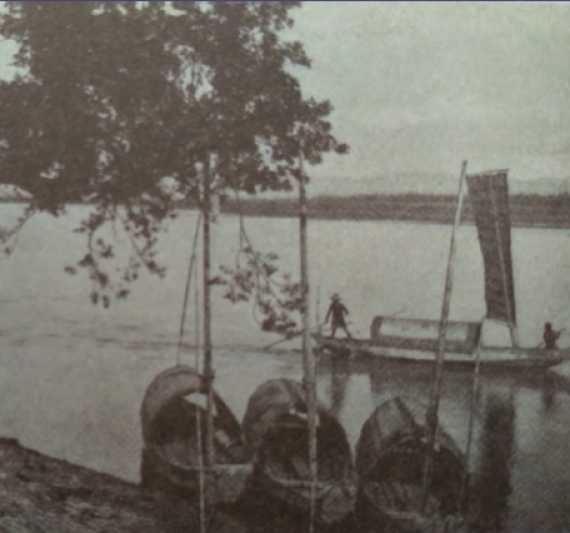Canals and Rivers in Jingmei
Development of Jingmei Street
-
Jingmei Night Market
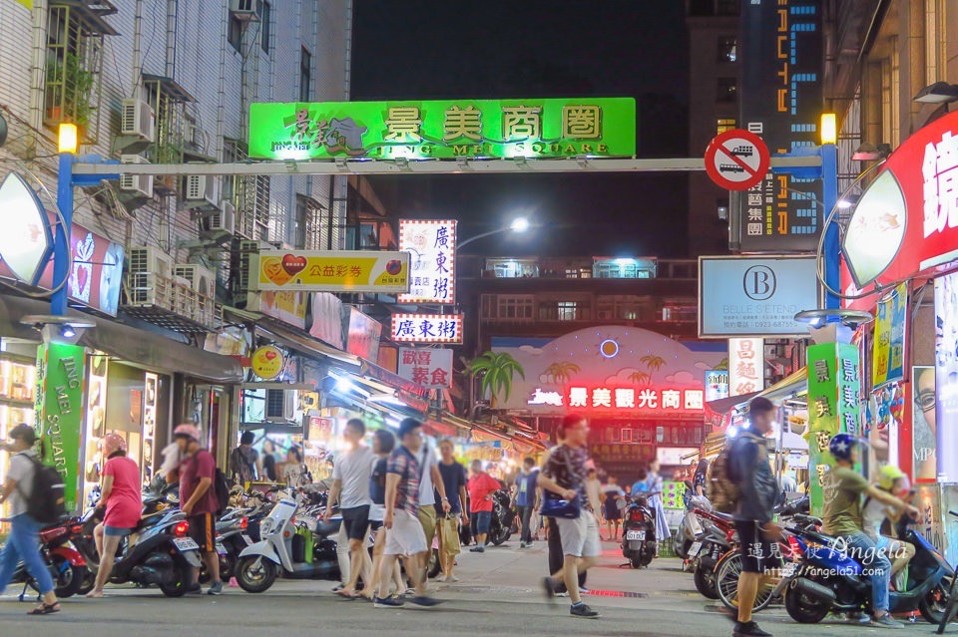
Jingmei Old Street is a local food hub, where the night market with local features gradually develops. The night market is next to Shih Hsin University and thus visited by many students. Eateries open at night to accommodate people’s need for late-night supper. They don’t have to worry about not having things to eat at midnight. Jingmei Night Market differs from general commercial night markets in that it offers lots of traditional foods. Chain stores that can be found everywhere are rarely seen here.
-
Jingmei Public Market
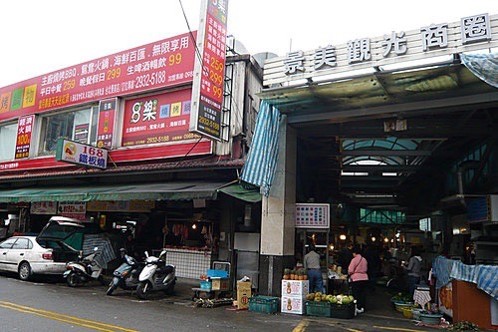
The market was established as early as in 1919. It is at the intersection of both ends of Jingwei Street. When it was first established, the market was a shabby square pavilion with an area of approximately 66 m2; it was known for selling pork. There are still local eateries at the site nowadays, bustling with people.
-
Jingmei Urban Renewal
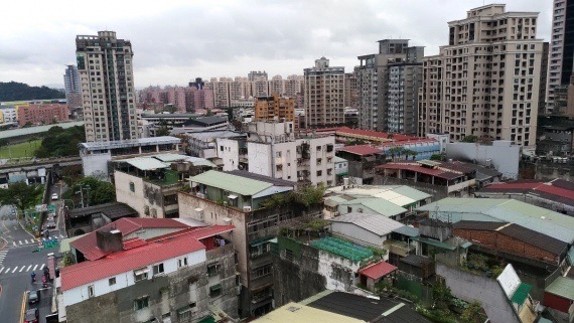
Yuetai Fengfan, the 2012 urban renewal project located on Cheqian Road, is a 33-story steel reinforced concrete building remodeled from the one-story and two-story buildings originally located at the site.
Skyline, the 2016 urban renewal project located in the area next to Jingxing Road, Jinghou Street, and Jingmei Street, is a 27-story building on Jingmei Old Street.
Surrounded by skyscrapers, Jingmei Street is flanked by old one-story, two-story, three-story, and four-story buildings that are about 50 years old. In particular, it is categorized as commercial land, which will be the key area where the future urban renewal project will be located.
-
Hengde Pharmacy and Hengmao Pharmacy
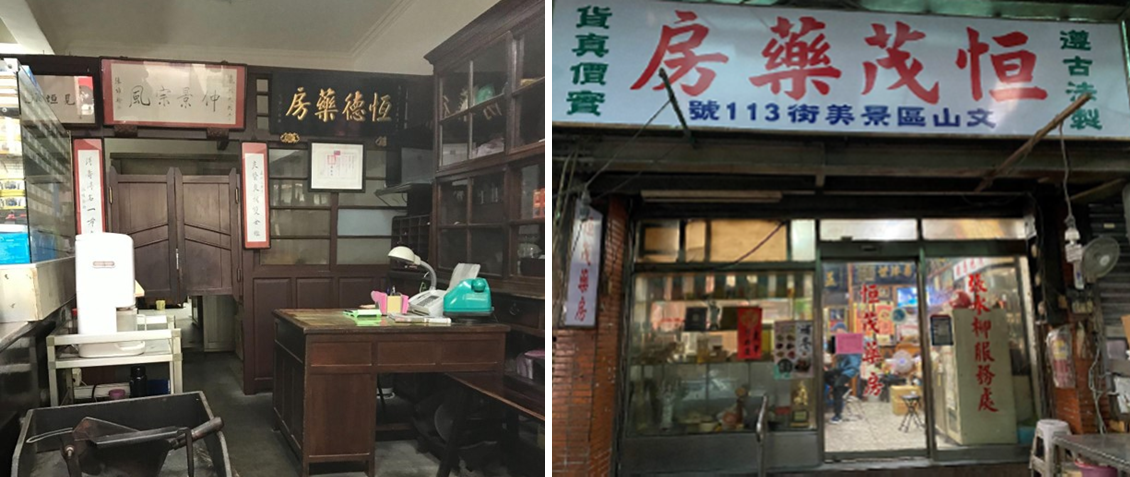
Before Western medicine was introduced to Taiwan, people purchased medicines in traditional Chinese herbal pharmacies. Hengde Pharmacy and Hengmao Pharmacy have been in operation for over a hundred years; they bear witness to the rise and fall of Jingmei Old Street in the past hundred years.
Despite the progressive advancement of Western medicine, traditional Chinese medicine has its existence value. In fact, there is a rising trend toward the utilization of traditional Chinese medicine due to the increasing popularity of health preservation.
Changes in the Four Generations of Jingmei Bridge
-
Jingmei Wooden Irrigation
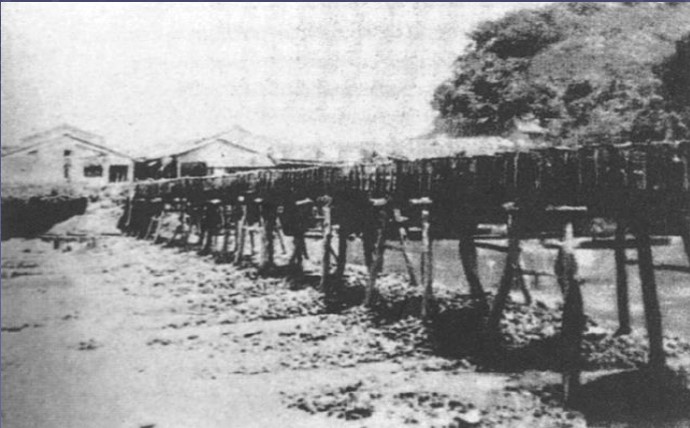
The locations of the four generations of the Jingmei Bridge are slightly adjusted. Imagine that we were standing here about 250 years ago, the bridge was not located here. It lay to the east of the bridge now. Initially, it was a wooden aqueduct system used to move water across the river.
The end of the Jingmei Wooden Irrigation in Xindian was called “Jiantou (source)”, and that of it in Jingmei was called “Jianwei (mouth).” “Jianwei” later evolved into “Jingmei”, a more elegant name with similar pronunciation to “Jianwei.” “Jingmei” means a beautiful place.
-
Liugong Bridge
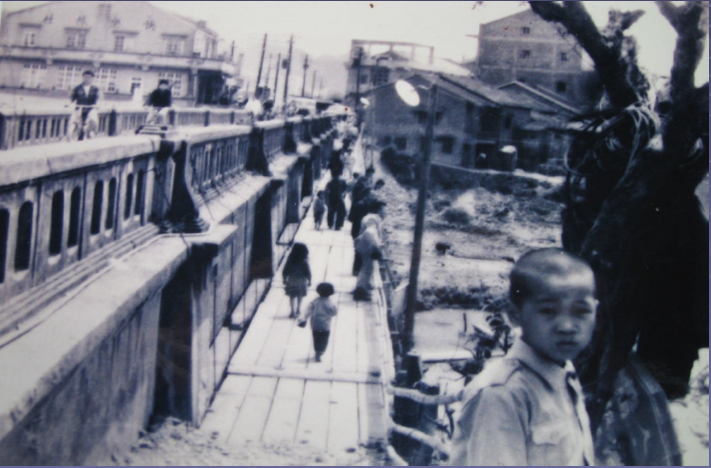
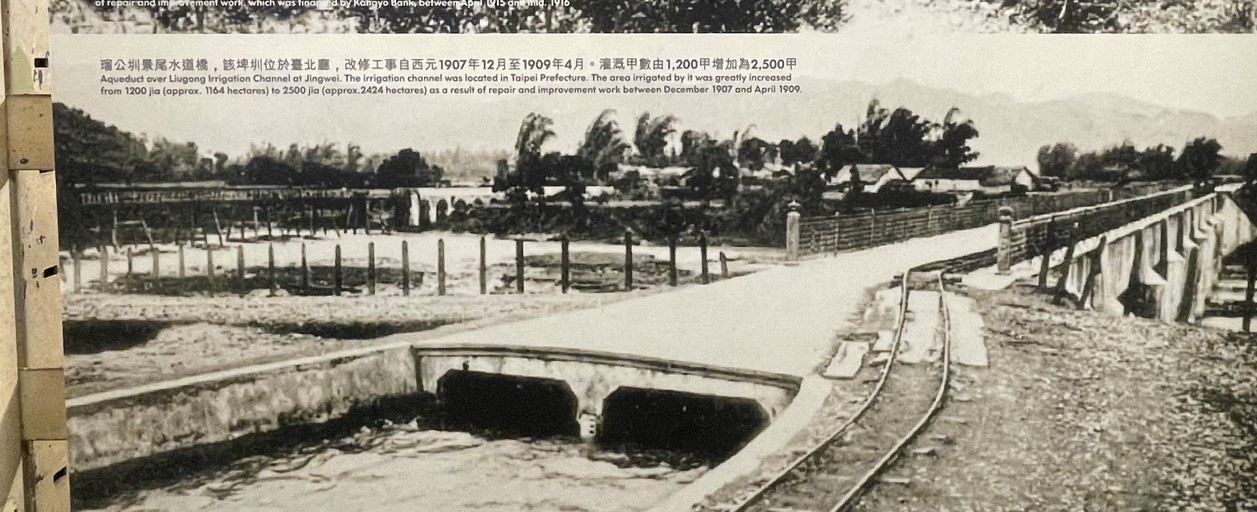
The Japanese government started to remediate the Liugong Canal in 1901 during the Japanese occupation. The remediation included the remodeling of the Mujian Waterway. The waterway was remodeled into a reinforced concrete bridge, which was completed in 1908. Pedestrians and vehicles could travel on this amphibious bridge, and there was a waterway under it. It was Taiwan’s first amphibious bridge made of reinforced concrete.
The second-generation bridge was named “Liugong Bridge” after the person who built the Liugong Canal. Compared with the Mujian Waterway, it slightly moved toward the west.
-
Old Jingmei Bridge
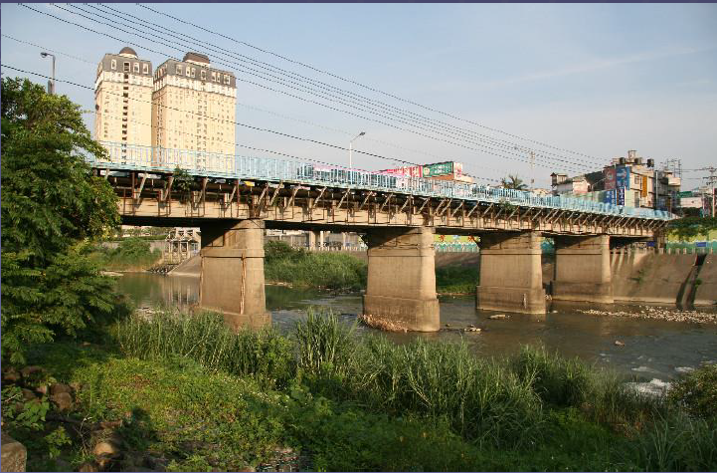
The third-generation bridge was built in 1955 to replace the Liugong Bridge that was demolished in 1963 because muddy and sandy sediments on the riverbed and its height (too low) affected water flow. This bridge was named Jingmei Bridge. There was no waterway under the bridge; only pedestrians and vehicles could travel on it. Moreover, this new bridge slightly moved toward the west.
-
New Jingmei Bridge
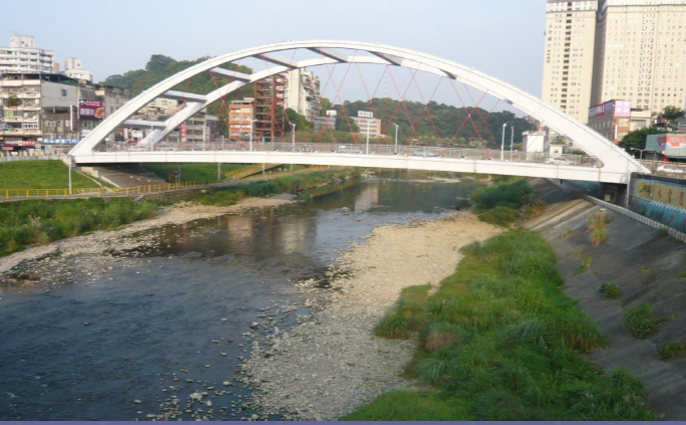
In 2009, the reconstruction of the third-generation bridge began because the bridge could not take heavy traffic and it was too narrow. The fourth-generation Jingmei Bridge was completed in 2010. It is a tied-arc bridge without bridge piers. Lighting cables and landscape LED lights were added for lighting at night.
Kaidao Memorial Tablet
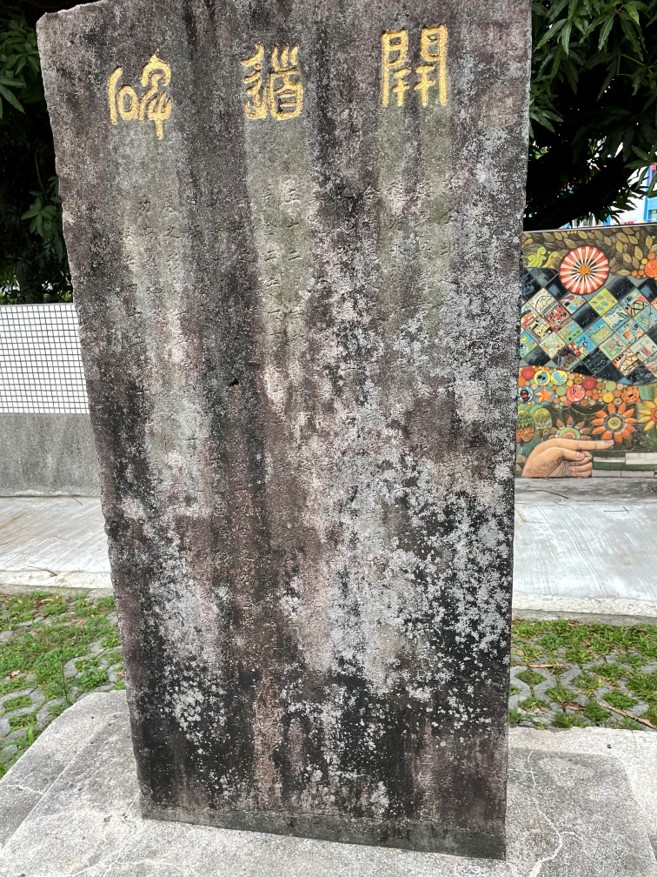
The Kaidao Memorial Tablet was erected at the entrance to the Jingmei Bridge. “Kaidao” means to build a road.
The monument was erected in 1909, and bears witness to the course of development of Jingmei. It constitutes a historical account of the following: the course of a section of the Liugong Canal was changed to Jingwen Street after the completion of the Liugong Bridge in 1908; land was reclaimed from the old canal that flowed through Jingmei Street; and the construction of Muzha Road.
Xizikou
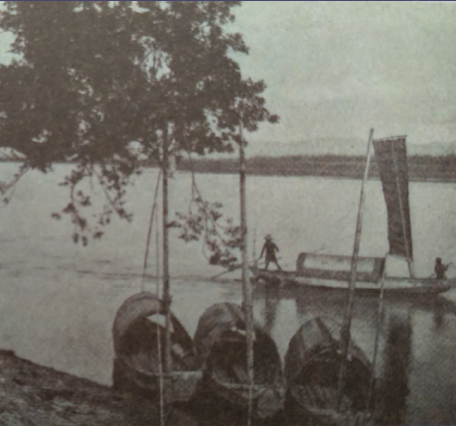
In an era where land transport was not developed, water transport was the most convenient transportation method. Places in which waterways concentrated could easily develop into settlements.
The source of Jingmei River can be found in Shenkeng and Shiding; the river is a very important waterway. In the early 19th-century, the Xizikou Ferry Port silted up. After the ferry port moved upstream to the entrance to Jingmei Street, Xizikou gradually declined.
Xizikou in Jingmei is located at the intersection of Jingmei River and Xindian River, two important waterways. Consequently, Xizikou became the oldest and busiest ferry port.
In the early 19th-century, Jingmei Old Street was a shopping street in front of the ferry port. It was divided into Formerly Jingmei Up Street and Down Street. The area close to Jingmei River is Up Street. The boundary between Up Street and Down Street is now known as Lane 282, Jingxing Road.
After Wanxin Railway began operation, the transportation center shifted. Down Street gradually replaced Up Street.
Wulixue Canal
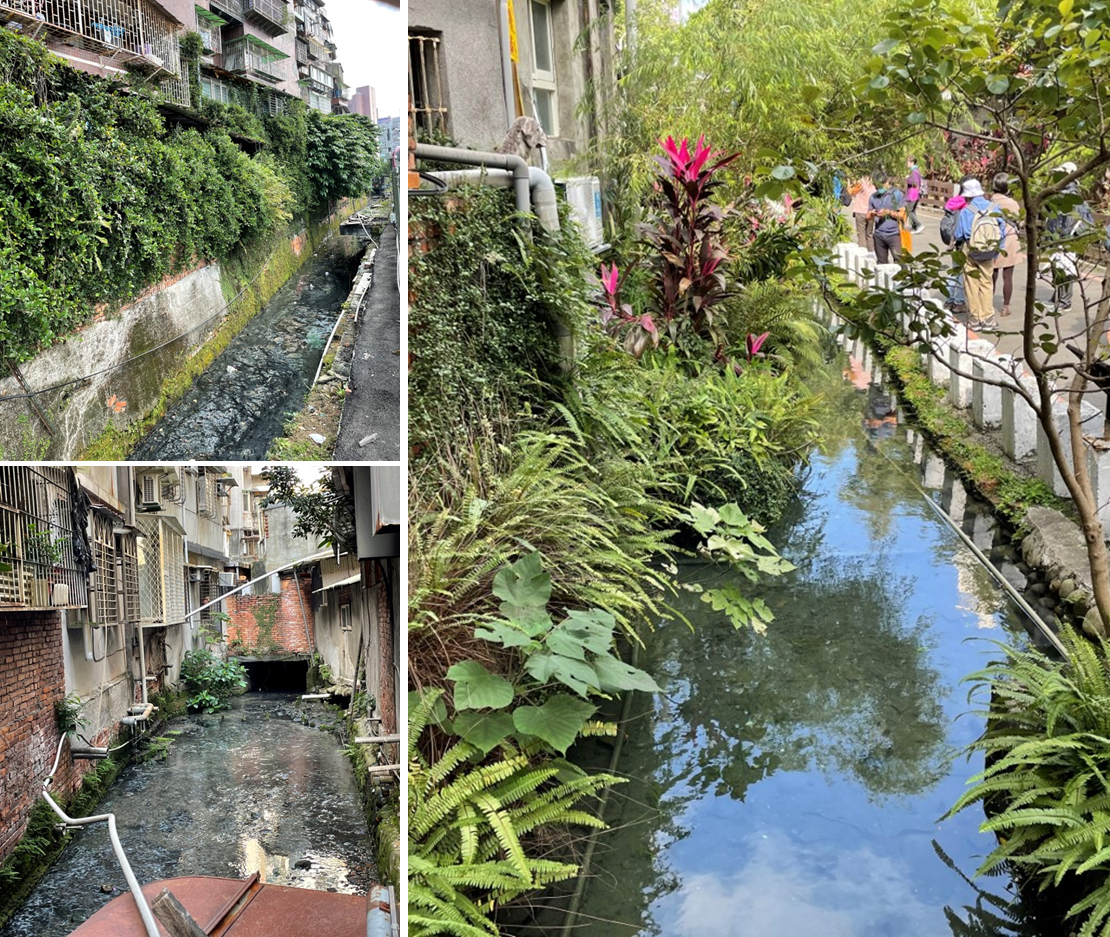
Taiwan’s climate is favorable for growing paddy rice; it can be harvested twice a year. Han people began to pioneer the land in the Qing dynasty. In the early days, they relied on ponds for water supply, but these ponds were not a stable water source since they were susceptible to weather conditions. Irrigation facilities were needed to provide a stable water source. Thus, canals were created.
There were primarily two canals used to irrigate fields in Taipei: Wulixue Canal and Liugong Canal. Both of these two important canals in Taipei flowed through Jingmei. The former waterways turned into roads on which pedestrians and vehicles travel nowadays.
The old name of Jingmei River was Wulixue River, after which Wulixue Canal was named.
The source of the canal was Jingmei River. Located to the south of Jingmei, Jingmei River was a natural boundary. In 1907, the river flowed into Liugong Canal, whereby Liugong irrigation group system was established.
Currently, several traces of the Wulixue Canal can still be found in Taipei City.
最新自 社大行政團隊
- 111-1公民周:社區小故事-我的大新聞
- Education and Entertainment in Jingmei
- Transportation in Jingmei
- Religion in Jingmei
- Food in Jingmei
- 【復興景美文化軸帶─尋找新人文渡口】文化社造成果展
- 折頁設計
- 【復興景美文化軸帶─尋找新人文渡口】 青銀共創提案─景美畫傘趣
- 文山學教案工作坊
- 水文化社造萬和水水家園─小小空間魔法師改造工作坊
- 水文化社造─青銀共創提案愛麗絲愛乾淨組至景美夜市進行垃圾不落地行動
- 青銀共創提案活動─台大串市場
- 復興景美文化軸帶,尋找新人文渡口 【文山好行-友善單車環境向前走】公共論壇
- 復興景美文化軸帶,尋找新人文渡口 【現代新渡口】公共論壇
- 水文化社造:暑期親子1日營─小小導覽員第二梯次
- 水文化社造:暑期親子1日營─小小導覽員第一梯次
- 木柵公園的人工浮島
- 移除外來魚種
- 【找回萃湖美力】易拉展
- 【文山水岸-景美溪大河願景】公共論壇紀錄
- 「我們的景美溪願景」焦點團體座談紀錄
- 木柵公園的夜間賞螢活動內容
- 景美溪流域學踏查會議
- 文化社造--青銀共創沙龍-【創業不NG】
- 文化社造--青銀共創沙龍-【創業前該具備的能力-從0到1】
- 文化社造--藝文沙龍-當蘇軾遇到莫札特
- 文化社造--藝文沙龍-都會中的遺圳─霧裡薛圳
- 文化社造--藝文沙龍-作為一名創作者
- 文化社造--藝文沙龍-多元文化‧藝饗美學
- 文化社造--藝文沙龍-新時代的剪花
- 文化社造--景美深度文化旅行導覽活動-景美文化搖籃地
- 文化社造--景美深度文化旅行導覽活動-探訪景美老街
- 文化社造--景美深度文化旅行導覽活動-都會遺圳─霧裡薛圳
- 文化社造--文化旅行導覽人才培訓課程-研討踏查文史景點資料
- 文化社造--文化旅行導覽人才培訓課程-景美街老渡口週邊踏查
- 文化社造--文化旅行導覽人才培訓課程-溪子口老渡口週邊踏查
- 文化社造--文化旅行導覽人才培訓課程-萬隆地區週邊水文化探究
- 文化社造--渡口意象設計工作坊
- 文化社造─公共論壇─尋找新人文渡口
- 文化社造─社造點參訪(兩日)活動
- 文化社造─社造點參訪(大稻埕碼頭、昌吉轉角)
- 文化社造─營造社區人文魅力的公私協力密技研習講座
- 文化社造─景美新人文渡口研習講座
- 文化社造─105年第一場藝文沙龍&深度文化小旅行
- 活化萃湖.打造本土樂園
- 打造原生樂園 社大志工齊摸萃湖外來魚
- 2013 春遊•文山水岸
- 2013年活化萃湖活動 ─寫生、攝影及外來種移除
- 2013 景美溪鴨鴨放流暨淨溪活動
- 2011《文山藝術季─社區河岸藝想節》

